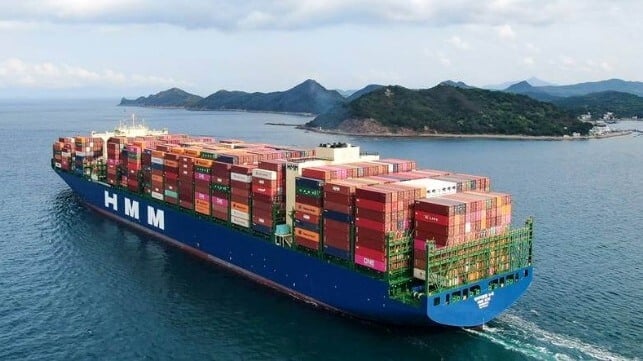HMM Accelerates Strategy with Plans for Container and Dry Bulk Growth

HMM announced plans to accelerate its expansion efforts focusing on both its container shipping and dry bulk operations in a move designed to double the size of the operation by 2030. This comes after the state-controlled banks shelved plans to privatize the carrier and as the Korean government signaled plans to provide further financial support to the shipping industry.
“We plan to build a stable portfolio by expanding the bulk and integrated logistics business, focusing on the container business,” HMM said in announcing its 2030 mid- to long-term strategy. This follows a 2022 announcement where the carrier said it would invest $11.4 billion over five years with the majority of the investment for new vessels as well as terminals and logistic facilities.
HMM is expected to reach a total of 84 containerships in 2024 with a capacity of 920,000 TEU. This includes the delivery of the first of a dozen new vessels ordered in 2021 from Hyundai Heavy Industries and Daewoo Shipbuilding (now Hanwha Ocean). In January 2024, the company took delivery of the first vessel the HMM Garnet (13,000 TEU) announcing it would reach 1 million TEU with the delivery of this class. Further, they said 80 percent of the fleet would have a capacity of greater than 10,000 TEU improving its cost structure and operational efficiency.
The next phase of the strategy calls for the carrier to reach 1.5 million TEU with 130 vessels by 2030. They are also increasing the focus on sustainability reporting that two of the vessels being delivered this year each with a capacity of 7,700 TEU will be LNG powered. The new 13,000 TEU class is being built LNG-ready and the company recently ordered nine 9,000 TEU methanol dual-fuel containerships.
HMM is currently ranked as the eighth largest carrier but significantly behind the next largest carrier Evergreen which currently has a capacity of approximately 1.67 million TEU. Plans for the container service also call for service network expansion and route diversification HMM announced.
These steps are seen as a move in response to Hapag-Lloyd’s pending departure from The Alliance in 2025 to start a new network with Maersk. HMM looks to fill some of the void in the partnership that also includes Ocean Network Express (ONE) which has also announced ambitious expansion plans and Yang Ming.
HMM also highlighted strong growth plans for its dry bulk operations which currently has 36 ships and will grow to 110 ships by 2030. The DWT is expected to grow from 6.3 million to nearly 12.3 million. The dry bulk expansion is planned to balance the container segment while HMM has also reported it will build and charter car carriers and has four new heavy-lift vessels that were ordered in 2023.
Korea’s two financial institutions, Korean Development Bank and Korea Ocean Business Corp. indicated a little over a month ago that they were recommitting to HMM and deferring plans to privatize the company after a proposed sale collapsed in February. The financial institutions had been exploring for several years the privatization saying that the company had been stabilized and should be returned to private management to make future investments.
Shipping and the shipbuilding industry are viewed are core elements of the Korean economy. The government in conjunction with HMM’s strategy announced that it plans to acquire additional bonds to support the shipping industry and will continue to finance the development of green shipping. New loans will be provided at low-interest rates to encourage investments in shipping.
